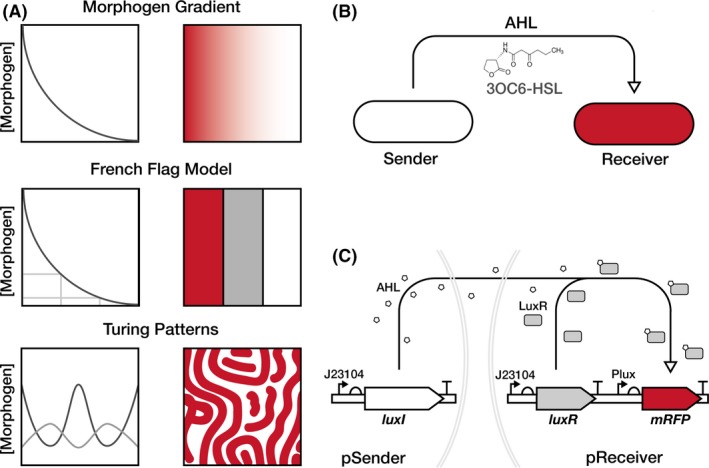Figure 1.

Design of a unidirectional cell‐to‐cell communication system.A. Illustration of diffusion‐driven patterning models. At the top is a morphogen gradient, a simple form of patterning that is also the basis for the French Flag model, presented immediately below, and the even more complex Turing patterns presented in the bottom row. The French Flag model requires sensing the concentration of a morphogen to differentiate the response, while Turing patterns require two morphogens that regulate each other and diffuse at different rates.B. The cell‐to‐cell communication system use here is made up of two different cells, a Sender cell producing the N‐(3‐oxohexanoyl) homoserine lactone AHL molecule and a Receiver cell that activates mRFP expression (red) in response to that AHL.C. The individual plasmid constructs used in this study. The pSender plasmid constitutively expresses the AHL synthase LuxI, and the pReceiver plasmid constitutively expresses the transcriptional activator LuxR. When LuxR is bound to AHL it upregulates expression from the PLux promoter which is this case activates expression of a monomeric red fluorescent protein (mRFP) gene. Both luxI and luxR are expressed in these constructs with constitutive promoter J23104.
